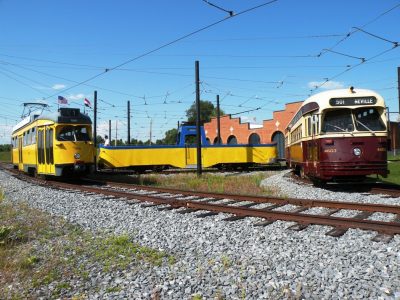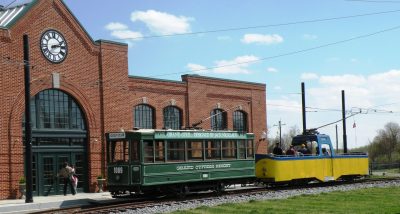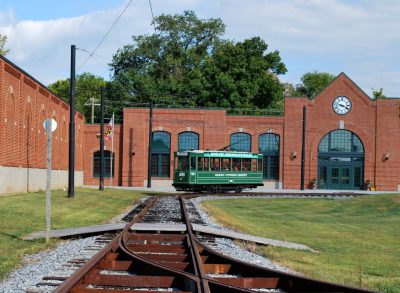More than five decades ago, when the D.C. Transit system began to replace its street cars with buses, local folks took an interest in preserving them, said Ken Rucker who has been with the National Capital Trolley Museum for 48 years. Since then, the museum, located in Colesville’s Northwest Branch Park, has preserved and interpreted the history of the region’s electric street railways—and shared it with some 12,000 visitors annually.

Rucker, who serves as both the corporation’s president and the museum’s director of administration, said that the Maryland-National Capital Park & Planning Commission offered two possible locations for the museum. The Colesville site was chosen because it “is closer to the core of the volunteers who have built and operated the museum since 1965.”
A board of trustees sets the museum’s policies, and a mostly volunteer staff numbering about 25 operates the museum; their expertise includes the “history of electric street railway technology, education, administration and mechanics,” Rucker said. Admission, donations, museum shop sales and membership dues fund the museum.
Many of the museum’s visitors, who hail from the Washington metropolitan area as well as around the world, Rucker said, “are folks who are interested in urban studies, transportation history and just plain old ways. The majority are simply looking to share an interpretive experience with their children, which is the attraction of street car rides on the demonstration railway.”

Permanent exhibits—the demonstration railway and three halls of exhibits–illuminate “early 20th century transit technology and its influences on daily life and community development, especially in Montgomery County,” Rucker said, noting that the demonstration railway is the “most popular since it is an interactive experience, not a static one.”
There is a lot more to see beyond the two-mile trips on the street car–like the model of the Rock Creek Railway to Chevy Chase Lake, the series of comic clips from Harold Lloyd’s silent movies with the cars as his props and the 12-minute film, “Trolley by Golly,” about the development of street car transportation. In Street Car Hall, Rucker said, “visitors learn about the growth of transit as docents discuss the development of the vehicles and systems that built our cities–from the small 1890s trolleys to the modern President’s Conference Committee streetcars, which provided service until 1962 in the Nation’s Capital.”
While visitors may take advantage of the museum’s permanent exhibits during regular operating hours, the museum also schedules special programs, and two are coming up this month. The programs, Rucker said, are “an alternative to its programs for school field trips when the schools close for the holiday.”

“Step Lively, Please, Aboard the Spring Break Special” (10 a.m. to 1:30 p.m. Thursday, April 13, and Friday, April 14) offers parents and children an opportunity to visit the museum and see the kinds of activities that are offered during the Summer Children’s Program,” said Joanie Pinson, who has been the museum’s director of education for 10 years. Both programs “feature either a story time or vintage trolley-era cartoons for young visitors,” she said. “The Summer Program also features a trolley craft, such as a paper conductor’s hat.”
And at the “Calvacade of Street Cars” (Sunday, April 23, noon to 5 p.m., last car 4:30 p.m.), unlimited rides on several cars from the museum’s collections as well as museum displays and docent-led tours will be offered. “For most of the year, the museum offers rides on one or two cars from its collections on any given day,” said Wesley Paulson, the museum’s director of development. But on this single visit, visitors can “ride along the demonstration railway aboard several European trams and North American street cars.”
The National Capital Trolley Museum, 1313 Bonifant Road, Colesville, is open from noon to 5 p.m. every weekend and from 10 a.m. to 2 p.m. on selected Thursdays and Fridays during the spring, summer and fall. Admission is $7, $5 for age 2 to 17, 65-plus. Visit www.dctrolley.org or call 301-384-6088.